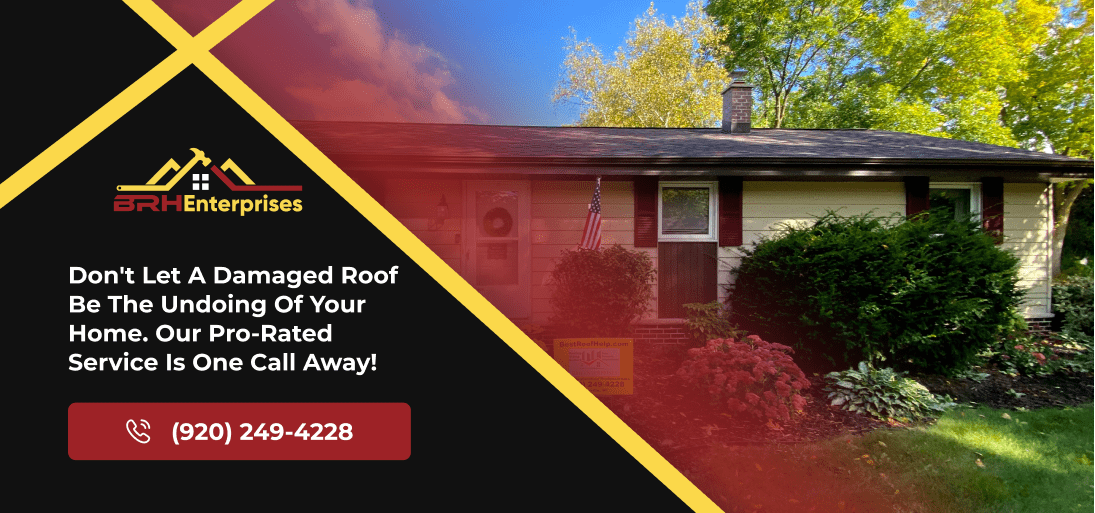How Long Does A Galvanized Steel Roof Last? What Wisconsin Homeowners Need to Know
Estimated Reading Time : 6 Min.

Galvanized steel has become an increasingly popular metal roofing choice among Wisconsin homeowners seeking durable, long-lasting protection for their homes. As a premium roofing material, galvanized steel offers exceptional resistance to the harsh Wisconsin climate, from heavy snowfall to intense summer heat and everything in between. But one question remains at the forefront for homeowners considering this investment: how long does a galvanized steel roof actually last?
Understanding the lifespan of your chosen roofing system requires looking at several key factors that impact its durability. The quality of the galvanization process, the thickness of the steel, environmental conditions, and maintenance practices all play significant roles in determining how many years your roof will provide reliable protection. While standard asphalt shingles might need replacement every 15 to 20 years, galvanized steel typically offers a significantly longer service life.
By examining what affects the steel roof replacement timeline and how proper maintenance can extend your roof’s performance, you can make an informed decision about whether this durable option is right for your home.
Understanding Galvanized Steel Roof Technology
Galvanized steel is created through a specialized coating process where steel sheets are dipped in molten zinc. This zinc layer acts as a sacrificial barrier, corroding before the underlying steel can be affected. The thickness of this protective coating, measured in G-90 (indicating 0.90 ounces of zinc per square foot) or similar ratings, directly influences a roof’s lifespan. Higher ratings mean thicker zinc layers and better protection for Wisconsin homes.
Today’s market offers several advanced variations of protective coatings. Traditional galvanized steel relies solely on zinc, while modern Galvalume combines zinc with aluminum for enhanced corrosion resistance. This aluminum-zinc alloy coating typically offers superior performance in acidic environments and can extend a roof’s lifespan by around 20% to 30% compared to standard galvanization.
For Wisconsin homeowners facing extreme temperature fluctuations, newer options include stone-coated steel and painted galvanized systems with specialized polymers. These products add additional weather resistance against UV damage, ice dams, and freeze-thaw cycles common throughout Southern Wisconsin.
Local roofing contractors typically recommend higher-grade G-90 or Galvalume coatings for Wisconsin’s seasonal weather conditions. These premium options may represent a slightly higher initial investment but deliver significantly better performance against the region’s challenging weather patterns, potentially extending a metal roof’s durability by several decades.
Average Expected Lifespan for Galvanized Steel Roofs
Properly installed galvanized steel roofing systems typically deliver 50 to 70 years of reliable protection for Wisconsin homes. This impressive longevity significantly outperforms traditional asphalt shingles, which often require replacement after just 15 to 25 years in our region. The wide difference in lifespan stems from several factors, particularly coating thickness and environmental conditions.
Wisconsin’s climate presents unique challenges for roofing materials. Heavy loads of winter snow test structural integrity, while the freeze-thaw cycles can put stress on metal panels. Despite these challenges, galvanized steel performs exceptionally well when it’s properly installed.
However, the humid summers and occasional acid rain in southern Wisconsin can accelerate zinc coating deterioration, potentially reducing maximum lifespan by 5 to 10 years compared to drier climates.
Rural Wisconsin properties typically see the upper range of lifespan expectations (60-70 years), while roofs in more industrial areas or near bodies of water may experience faster weathering. Homes in Madison, Janesville, and Milwaukee suburbs generally achieve 50 to 60 years of service when using quality G-90 rated materials.
Wisconsin’s temperatures also tend to fluctuate, which is one advantage for galvanized steel roofing — they promote the formation of a protective patina that further shields the zinc coating. This natural process contributes to the exceptional weather resistance of galvanized roofing systems throughout our state’s seasonal changes.
Critical Factors That Affect Your Roof’s Longevity
The installation quality of your galvanized steel roof plays a large role in determining how long it will protect your Wisconsin home. Professional roofers understand that proper fastening techniques prevent water infiltration and wind damage
Underlayment selection is equally important. High-performance synthetic underlayments provide secondary moisture protection and thermal buffering that standard felt materials cannot match. Proper ventilation systems prevent condensation buildup beneath metal panels as well, which is a particular concern during Wisconsin winters when indoor humidity meets cold roofing surfaces.
Southern Wisconsin’s environmental factors present unique challenges for galvanized steel roofs. Our region’s combination of humid summers and harsh winters creates more aggressive weathering than many other parts of the country. Proximity to agricultural operations can introduce ammonia exposure, which accelerates how fast the zinc coating deteriorates. Urban areas may experience acid rain that gradually compromises galvanization.
Tree coverage presents another consideration — overhanging branches not only risk physical damage during storms, they also trap moisture against the roof’s surface. Homes in exposed rural settings benefit from sunlight’s natural drying effect, often extending metal roof durability by several years compared to heavily shaded properties.
Essential Maintenance Practices to Maximize Roof Life
Regular maintenance is critical to achieving the full 40 to 70-year potential of your galvanized steel roof in Wisconsin’s challenging climate. Inspecting the roof twice a year or more allows homeowners to identify and address minor issues before the problems impact the roof’s structural integrity. Start by removing debris from valleys, gutters, and drainage channels where moisture can collect and accelerate the deterioration of the zinc coating.
When cleaning your galvanized steel roof, avoid harsh chemicals or pressure washing that might damage protective coatings. Instead, use a soft-bristle brush with mild soap and water for stubborn spots. If there are different roofing materials on the roof that touch, such as copper flashing, you may want to pay particular attention to it during repairs in order to prevent damage caused by galvanic corrosion. This is when one metal corrodes faster than the other, affecting both pieces.
Watch for warning signs that require immediate professional attention. Rust spots or discoloration typically indicate coating failure that should be addressed quickly before underlying steel is compromised. Loose or missing fasteners create entry points for moisture and should be replaced with proper weathertight screws. Panel deformation, particularly after heavy snow loads, may signal structural concerns requiring expert assessment.
Wisconsin homeowners should also monitor interior warning signs. Water stains on ceilings, increased energy bills, or excessive ice dam formation along roof edges all suggest potential failures in your roofing system. Southern Wisconsin’s professional roofing contractors can provide maintenance services that significantly extend the lifespan of your galvanized steel roof service life while preserving your valuable investment.
When to Consider Replacement: End-of-Life Indicators
Even the most durable galvanized steel roof eventually reaches the end of its serviceable life. Recognizing these warning signs early helps Wisconsin homeowners make prompt decisions before water damage affects the underlying structure. Finding that rust has advanced upon the zinc coating is the most obvious indicator, but when rust appears in multiple areas rather than a few isolated spots, your roof’s protective capacity is significantly compromised.
Structural issues like panel warping, widespread fastener failure, or seam separation indicate systemic deterioration. These problems typically emerge after 40 to 50 years in Wisconsin’s climate as temperature fluctuations and moisture exposure gradually weaken connections. Leaks that persist despite repairs suggest the galvanized coating has degraded beyond its functional capacity.
When evaluating whether to take on a repair or replacement, consider the roof’s overall condition and age. Isolated damage to less than 15% of the surface area often makes repair the economical choice. However, once deterioration affects larger portions, replacement typically offers better long-term value. A comprehensive inspection by a qualified Southern Wisconsin roofing contractor can assess whether your galvanized steel roof has reached this point.
The timeline in which you make decisions also depends on your future plans. If you intend to sell your property within 5 to 10 years, replacing an aging metal roof enhances curb appeal and eliminates potential inspection issues. For homeowners planning to stay long-term, investing in a new galvanized steel roof with modern coating technology provides renewed weather resistance and decades of protection against Wisconsin’s challenging climate conditions.
Making the Right Roofing Choice for Your Wisconsin Home
Choosing the right roofing material represents a significant investment decision for Wisconsin homeowners. When comparing the lifetime value of galvanized steel against other common roofing options, the numbers speak volumes. While asphalt shingles might cost less initially, their 15 to 20-year lifespan means multiple replacements during the same period as a single galvanized steel roof continues protecting your home. This replacement cycle creates substantially higher lifetime costs and environmental impact.
Wisconsin’s unique climate challenges, such as snow loads, hail, temperature swings, and high humidity, make galvanized steel’s durability particularly valuable. The metal roof’s resistance to ice dam formation, snow shedding capabilities, and structural integrity during storms provide peace of mind that less robust materials simply cannot match. Many homeowners find that the elimination of weather-related anxieties alone justifies making the investment.
When consulting with roofing contractors, ask specific questions about coating thickness, fastening systems designed for thermal movement, and ventilation strategies for preventing condensation. Request examples of installations that have weathered multiple Wisconsin winters. Consider your property’s specific level of weather exposure, as homes in open areas with high wind exposure benefit most from steel’s superior wind resistance, while heavily shaded properties might require additional considerations for moisture management.
Ultimately, galvanized steel roofs offer Wisconsin homeowners exceptional lifetime value through decades of reliable protection and minimal maintenance requirements in our challenging climate.
Maximize Your Roof’s Lifespan with BRH Enterprises LLC
If you’re a Wisconsin homeowner considering galvanized steel roofing materials, understanding its lifespan and maintenance is crucial. At BRH Enterprises LLC, we specialize in installing and maintaining galvanized steel roofs that can withstand Wisconsin’s unique climate challenges. Proper installation and regular maintenance are key to maximizing your roof’s longevity, which can range from 40 to 70 years.
Don’t let the harsh Wisconsin weather shorten the life of your investment. Contact BRH Enterprises LLC today at (920) 249-4228 to ensure your roof remains in peak condition for decades. Let us help you protect your home with a durable and long-lasting roofing solution.


